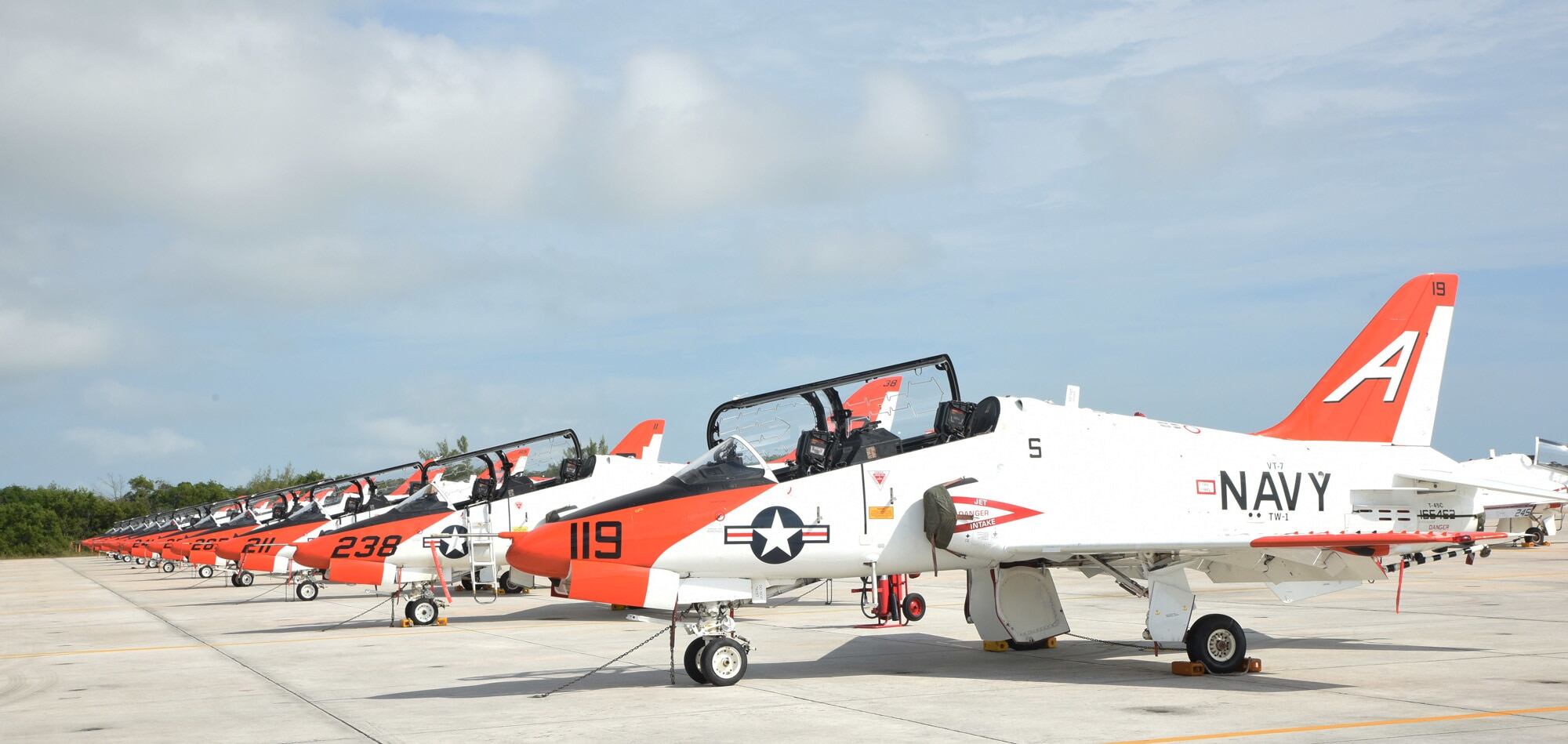The commander of the Pacific Fleet, Adm. Scott Swift, will lead a month-long review of the recent physiological episodes experienced by pilots flying in the T-45 and F/A-18 aircraft.
The new rash of incidents involving pilots in flight who had trouble breathing prompted the Navy to ground the T-45 trainer aircraft in early April. Dozens of Navy flight instructors had refused to fly the aircraft.
"Physiological episodes are the number one safety priority and focus area for the Naval Aviation Enterprise," said Naval Air Forces spokeswoman Cmdr. Jeannie Groeneveld, "and will remain our top safety priority until we fully understand all causal factors and have eliminated PEs as a risk to our flight operations."
Flight operations resumed April 18, however, with pilots using a modified mask that circumvents the aircraft's On Board Oxygen Generator System, known as OBOGS, which are believed to be part of the problem.
"The first two days of operations allowed experienced instructor pilots to fly with and adapt to the new mask configuration, and to identify any concerns," said Groeneveld. "The pilots were briefed prior to flight on the updated mitigations and operating procedures."
Flight restrictions, according to Groeneveld, included a cabin altitude limitation of 10,000 feet and a G force constraint in hopes of minimizing physiological impacts.
Soon after test flights resumed with the aforementioned restrictions in place, pilot feedback suggested that problems were persisting.
"Based on those inputs, further temporary flight restrictions will be put in place to limit altitude to 5,000 feet and less than 2 Gs," said Groeneveld, who added that additional mask configurations will also be evaluated following instructor feedback.
In response to the nagging complications, Vice Chief of Naval Operations Adm. Bill Moran issued an April 21 memo to Swift — obtained by Navy Times — telling him to investigate and respond "within 30-days."
The memo describes "physiological episodes" as occurring when "aircrew experience a decrease in performance due to the cabin pressure fluctuations, contamination of breathing air, or other factors in the flight environment."
"Breathing gas problems related to the aircraft's OBOGS — insufficient oxygen (flow/pressure/concentration) or contaminated breathing gas (leading to hypoxia) — still comprise the majority of our PE events (and the ones we see most in T-45s and F/A-18 E-Gs)," said Shoemaker in January. "Our challenge is contaminated air, for which we currently have no warning system."
"The root cause of physiological episodes remains unidentified, but engineers are working diligently to find a solution," said Groeneveld. "Progress and potential solutions have no manpower or cost restraints."
Moran is leaving the assembly of the review team up to Swift, but requested that the team "include appropriate engineering, aeromedical, fleet aviation, legal and public affairs representation.
"It is expected that at the completion of the review you will be able to validate actions being taken and make recommendations with respect to additional actions, if any, that should be conducted," Moran wrote
"The seriousness in which I view these incidents is reflected in the seniority of those leading this review," Moran said in an April 24 Navy press release. "They will provide a full and open accounting to our aviation community, their families and the public."
Mark D. Faram is a former reporter for Navy Times. He was a senior writer covering personnel, cultural and historical issues. A nine-year active duty Navy veteran, Faram served from 1978 to 1987 as a Navy Diver and photographer.
J.D. Simkins is the executive editor of Military Times and Defense News, and a Marine Corps veteran of the Iraq War.





